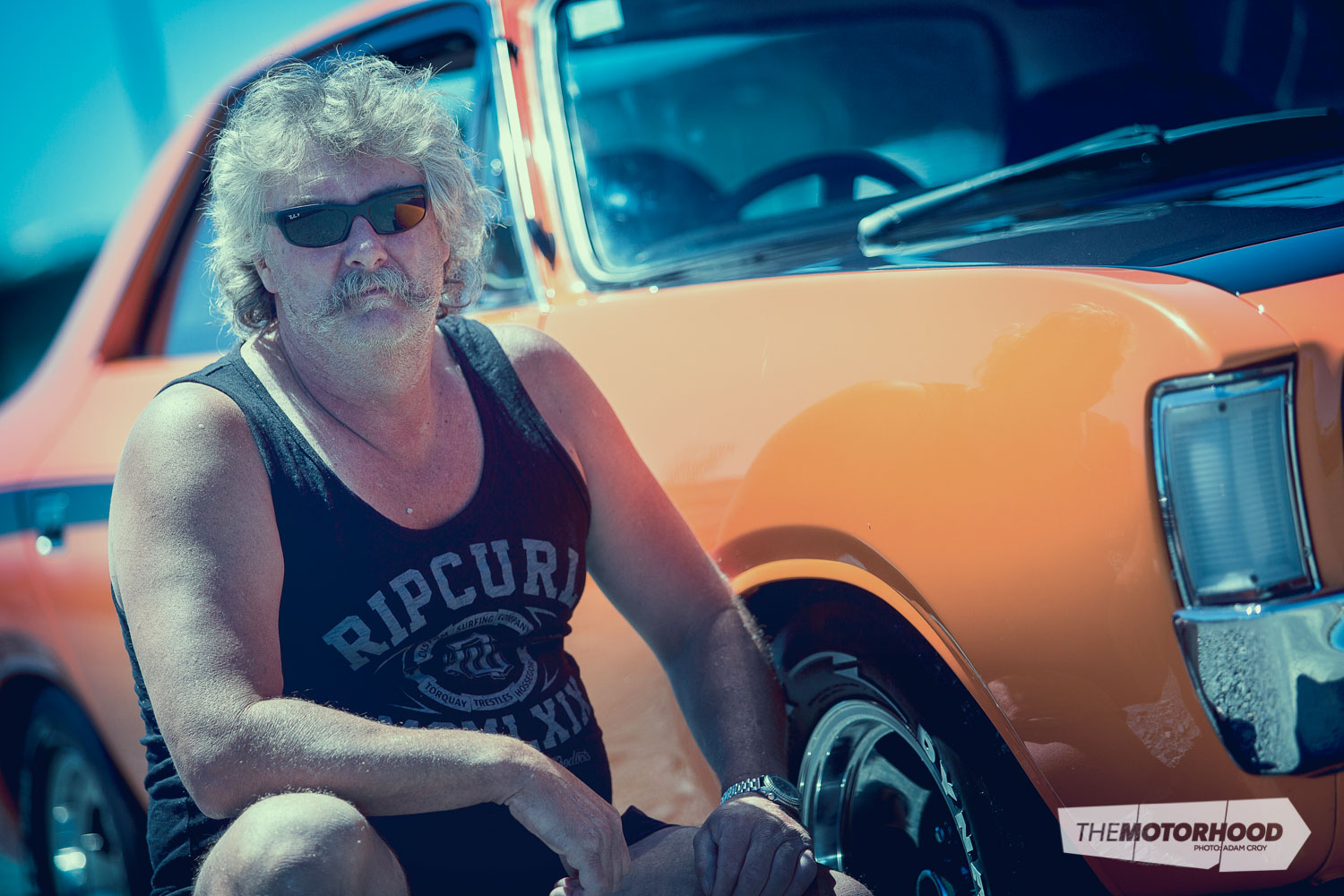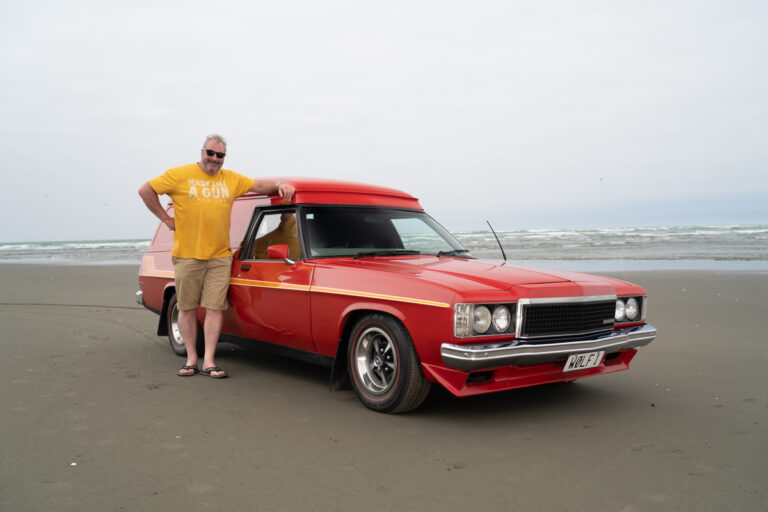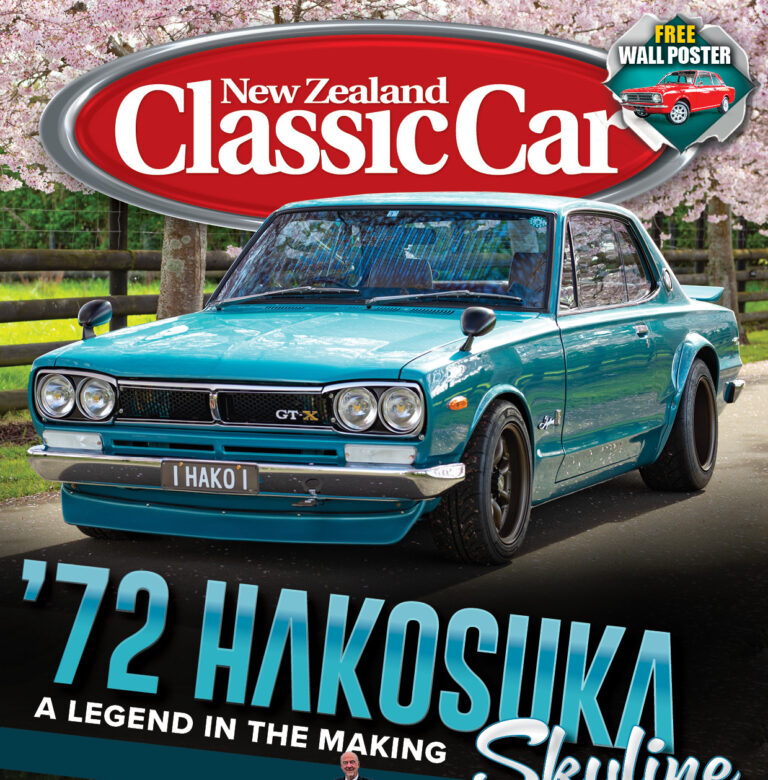data-animation-override>
“During the late ’60s and early ’70s, a muscle car revolution was taking place in the US and, half a world away in Australia, similar adrenaline-fuelled machines were also being built”
The Australian machines, not surpisingly, closely resembled their Yankee cousins, and, in typical fashion, the archetypical Ford versus General Motors versus Chrysler battle also continued, albeit with different names, as Holden, Falcon, and Valiant all battled for supremacy at great motor-racing events such as Bathurst, in a bid to increase market share throughout Australasia.

While the V8 remained the dominant engine for the majority of US muscle cars — and, indeed, for Aussie grunters such as the mighty Falcon GT-HO — straight-six engines were also very much a part of the formula for their Australian counterparts. This trend was best exemplified by the emergence of cars such as Holden’s hot GTR XU-1, while Chrysler chipped in with the mighty ‘six-pack’ Charger and Pacer. Both these Valiant-badged Chryslers would take to the race circuit to prove their worth against contemporary Ford and General Motors (GM) rivals but, interestingly, these six-cylinder–powered machines would both enjoy a far more successful racing career in New Zealand. As such, it is perhaps not too surprising that the Charger and Pacer have, for many Kiwi motoring enthusiasts, truly earned iconic status.
Vivid memories
One person who wouldn’t argue with these sentiments would be Ross Jenkins, the owner of the outstanding 1972 Valiant Pacer featured here. Indeed, Ross remembers the early encounters between Holden, Falcon, and Valiant as if it was yesterday, as these Aussie bruisers battled their way around ‘The Mountain’ and, of course, Kiwi motor-racing circuits during that era.

When pressed, Ross vividly recalls that he spotted his first Valiant Pacer back in the mid ’70s — a Regency Blue example whose owner lived in the same Waikato town of Morrinsville. Oddly enough, to this day, it remains the only Pacer with that colour scheme he’s ever seen. Needless to say, the Pacer made such a lasting impression on Ross, who was just 12 years old at the time, that he was determined to own one at some stage.
Ironically, when Ross left school in 1980, he went to work for the local Chrysler dealership — Kirk Motors — where he got to drive his first Valiant Pacer. The dealership traded a Bronze-coloured Pacer, and Ross had the enviable task of delivering it to the local panel shop for some minor touch-ups. Ross was just as impressed then as he was when he saw his first Pacer, and the short drive reconfirmed his desire to eventually acquire one of these cars for himself.
Ross’ father was also somewhat of a Chrysler fan, owning many different variants of the brand over the years, and that helped to keep his desire to own a Pacer well and truly alive.

According to Ross, it was the shape and style of the Pacer that stuck in his mind the most.
Ross had the usual succession of cars — such as a Morris 1000 and a Cortina MkI — before eventually buying his first Valiant Pacer from Watson Howarth Motors in Te Awamutu. Ross was only 18 years old at the time, but was given the green light by his father to purchase the car. Even though the Pacer was a huge jump outside the square in terms of size and power, Ross reckons his strict father probably gave his blessing because he felt the Valiant, being a large, heavy car, would be a safe one for his son to drive.
During this time, Ross was also following his passion to be an engineer, and he would keep the Pacer for 13 years, eventually undertaking a complete restoration of the car with the help of Rowan Marshall, a panel-beating friend.
Ross also converted the Pacer to run on CNG — something that was almost mandatory during the ’80s, especially if you happened to own a large, gas-guzzling, six- or eight-cylinder vehicle. Later, the Pacer was used as Ross’ own wedding car but was eventually — and very reluctantly — sold, the proceeds going towards purchasing a dairy farm.

Barn find
For many years, Ross focused on building his dairy farm into a successful business, and, despite owning several new cars, he never had the time to even contemplate owning another classic — especially a Pacer. There was the odd occasion when he thought about one day owning a 1963 Ford Fairlane compact — another car that always appealed to Ross’ taste — as he remembered the father of a friend had owned one of the ’60s Fords when he was growing up.
However, while Ross may have entertained stray thoughts about Fairlanes, they quickly evaporated in 2007 when he was advised by a friend of a Valiant Pacer lying derelict in a barn on a local farm.
As it turned out, Ross knew the owner quite well but had never known he owned the Pacer, which lay virtually rotting away in an old implement shed next to the milking shed. After some negotiating and parting with $800, Ross’ new Pacer project took pride of place in his workshop. The car sat there quietly, as Ross wasn’t too sure when exactly he would commence restoration due to the pending sale of his farm. Subsequently, the farm sale went ahead and that freed up some available funding for the Pacer project. Ross retained a 50-acre run-off area where he built himself a new house, plus a workshop in order to carry on his engineering passion.
Once the Pacer was moved into its new home, Ross and a good friend, Dean Findsen, decided to start stripping the car back to a bare shell — this revealing just how dilapidated the Valiant really was. Despite the fact it had looked reasonably tidy prior to the strip down — which also uncovered some rats’ nests and the odd bird’s nest — the reality of the situation was that the Pacer’s shell was quite rotten.

At this stage, Ross again called on specialist classic car restorer Rowan Marshall, of Marshall Panelbeaters, to take over the project. The first step was to acid dip the entire shell. This confirmed the Pacer’s shell was in poor shape, and it would take an enormous amount of time-consuming specialist body fabrication by Rowan and his team to bring the car back to its former glory.
Some suggested to Ross that he was wasting his time, as the Pacer had obviously suffered many dodgy repairs over the years, including a replacement rear-quarter panel that had been fitted incorrectly. Even the car’s roof was damaged — seemingly having been used as a trampoline!
Ross was certainly in for one heck of a project.
Capable hands
Once the Pacer was delivered into the capable hands of Rowan Marshall, work commenced immediately. Although Ross had given the green light, he knew these types of projects can get out of control both cost- and time-wise, and he remembers thinking halfway through that he was, in fact, far too committed to even contemplate abandoning it and knew he just had to keep going.
After two and a half years at Marshall Panelbeaters, it was time to pass the bare body shell literally next door to Greenville Auto Painters, which applied the striking ‘Vitamin C’ paint scheme — this being the car’s original colour, according to its factory build sheet. The next job was to apply the correct black stripes in the exact factory position — thankfully, Ross had made a stencil from tracings of the stripes on the car before it had been completely stripped, and he was also able to supply reference photographs of original Valiant Pacers to act as further guidelines. As far as Ross was concerned, paying extra-special attention to the exterior striping was important, as these are, without doubt, one of the most distinguishing features of the Pacer. The original livery included black striping that wrapped around the rear of the car and down the sides to the front doors, so this was also re-added. Some vehicles, such as Ross’ Pacer (with the A65 option) also had the bonnet black-outs. Exterior decals include the Hemi 265 sticker on the bonnet (in the centre at the front); the Hemi Pacer decal on the left-hand side of the rear of the vehicle, between the left and right brake and indicator lights; and, finally, the 265 Hemi decal that is incorporated into the striping on the rear side-panels of the car.

Hemi performance
Once the body was complete, Ross added new, upgraded, slotted and drilled front brake rotors, and finned R/T Charger drums on the rear. The limited slip differential is an original item, and Ross exchanged the original three-speed BorgWarner manual gearbox for a four-speed BorgWarner unit. Under the bonnet, Ross totally stripped the engine and had the 265ci (4343cc) six-cylinder Pacer block, which was not an original numbers-matching item, bored to 60 thou. over and added such items as roller rockers and triple Weber carburettors. >
The engine was completely balanced before fitting the custom exhaust headers and exhaust system.
The Pacer’s interior received new front seats — when Ross bought the car it was fitted with incorrect and different-style seats. Hemi Performance in Australia was able to locate original-style seats for the Pacer, and these were reupholstered with the correct Pacer vinyl. Most of the rear seat remains original, and only required minor repair work. The door cards are also completely original to the car, with only the chrome door-lever backing and arm rests new. Ross contacted Bradley Evans at Hemi Performance Parts in Nelson to supply him with many parts, Bradley’s assistance helping to simplify the restoration.
Ross imported the moulded headlining and a complete carpet set from Australia, while the original dash pad, which had seen better days, was replaced with a near-perfect used item he located in Invercargill. The stand-out feature of the Pacer interior is its instrumentation, which is shared with the R/T Chargers. The dash gauges in Ross’ Pacer were in reasonable condition, and he decided to strip them in order to replace the faces with new white transfers to finish off the interior detail. In this task he was aided with help from Robinson Instruments in Auckland.

Ross was also able to import a complete wiring loom from Australia, and this made the task of re-wiring the Pacer much easier. The car’s glass is all original apart from the driver’s door window, which, unfortunately, had too many chips in it and needed replacing.
The final touch included period-style Advanti Classic wheels and the Pacer was finally completed in late 2011.
According to Ross, he thoroughly enjoyed working on this restoration project, and, at the end of the day, it’s the enjoyment of working on these classic beauties that keeps us passionate about our hobby. If the budget blows out — and it usually does — and the frustration doesn’t get to you, then the end result will keep you smiling for years to come.
That’s certainly the case for Ross and his magnificent Pacer — well done, that man!
Ross would like to especially thank the late Tony Skinner and the team at Marshall Panelbeaters, Morrinsville; good mate Dean Findsen; Bradley Evans of Hemi Performance Parts in Nelson; Greenville Auto Painters of Morrinsville; Morrinsville Auto Electrical and One Stop Automotive in Huntly.



